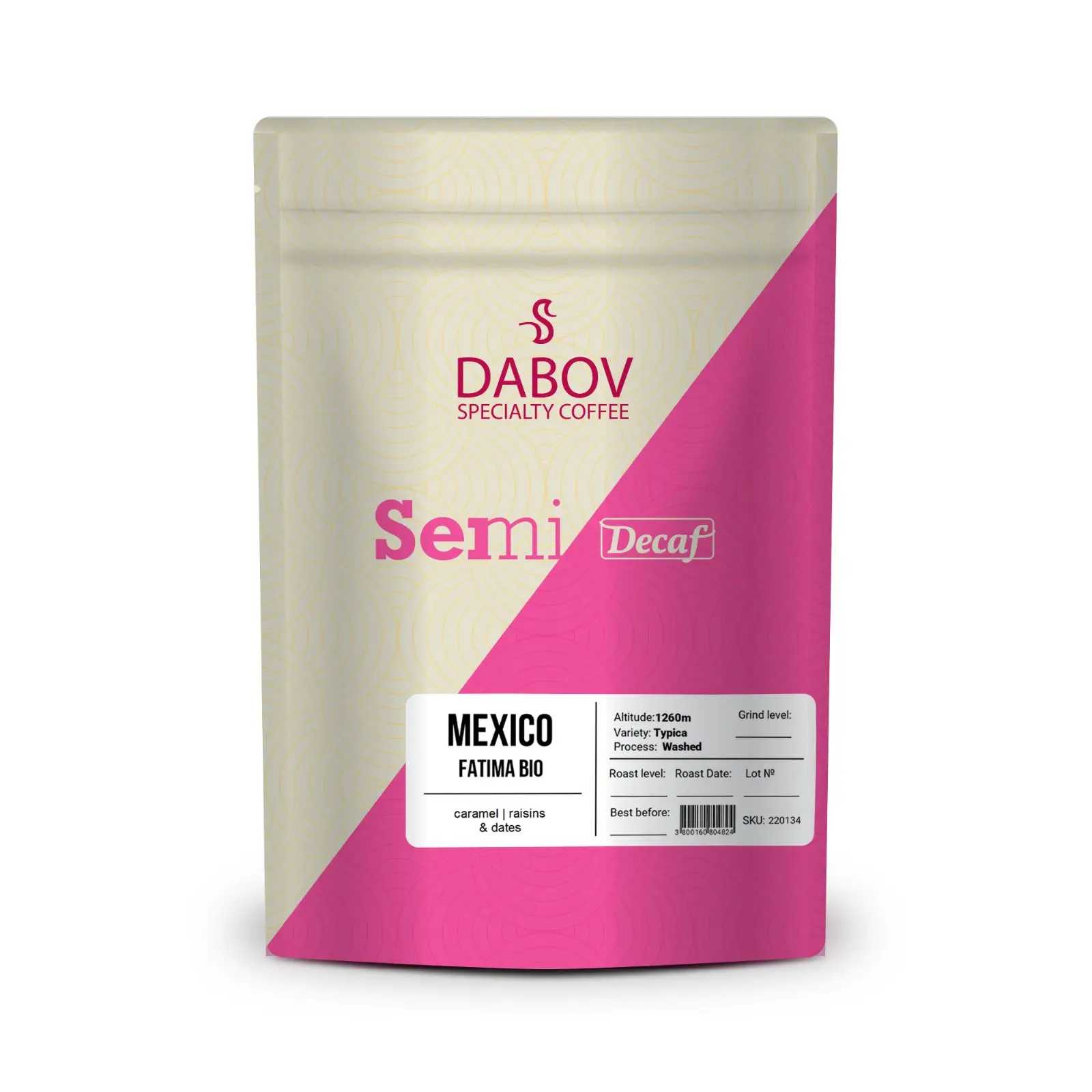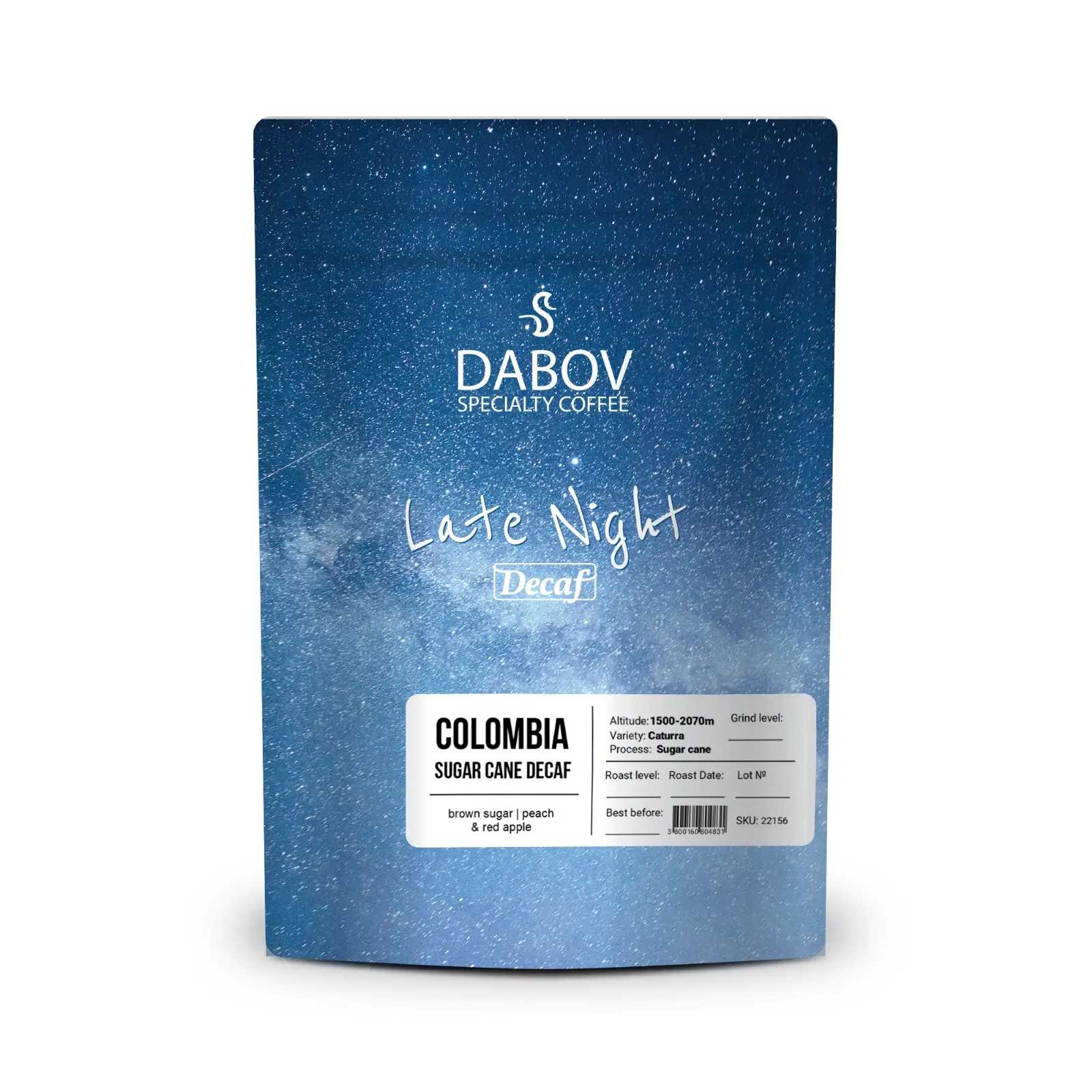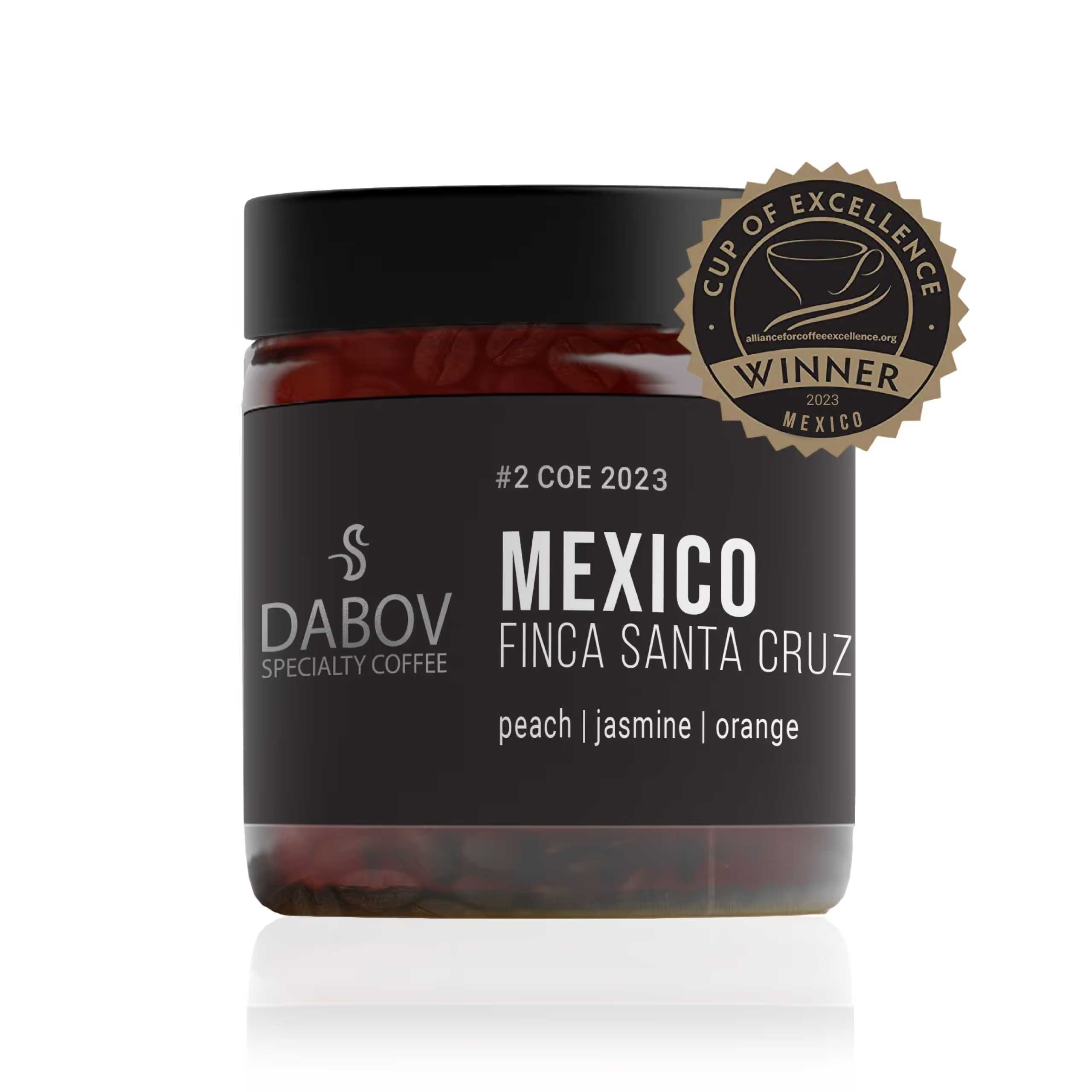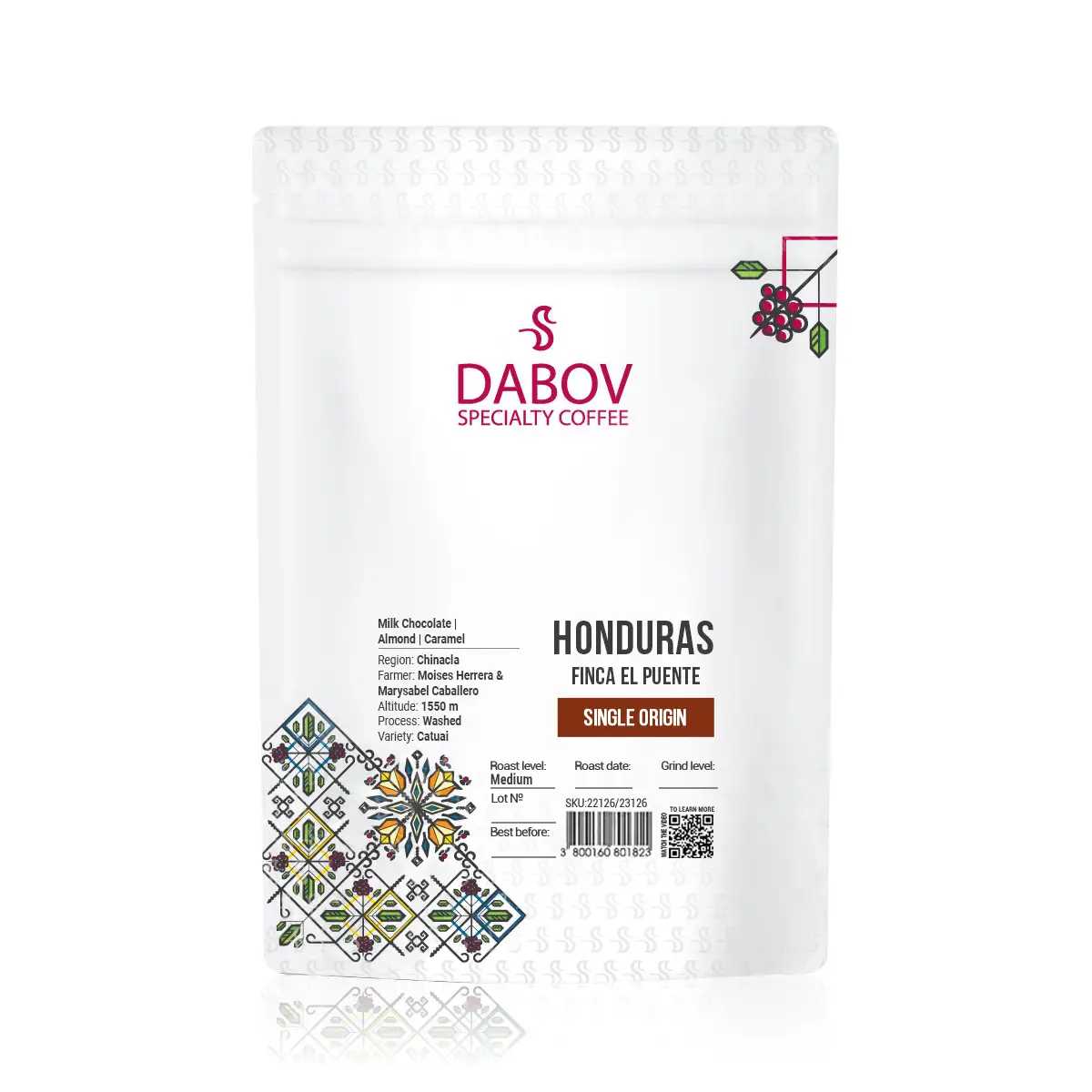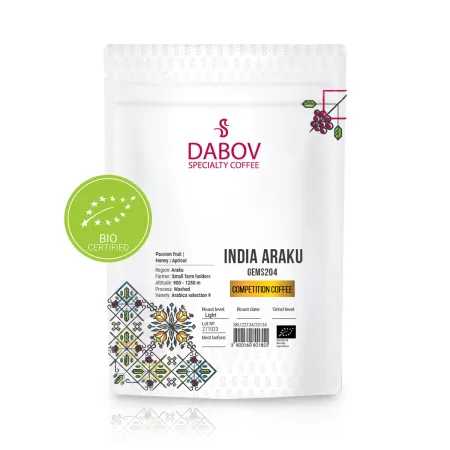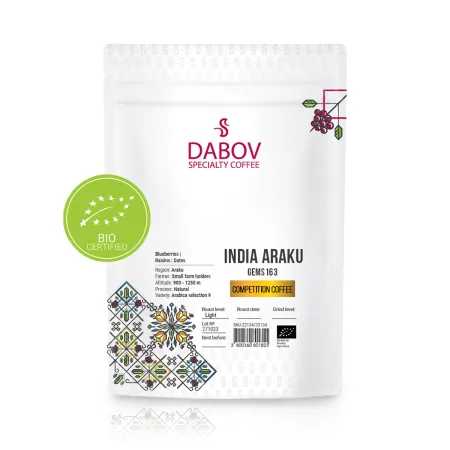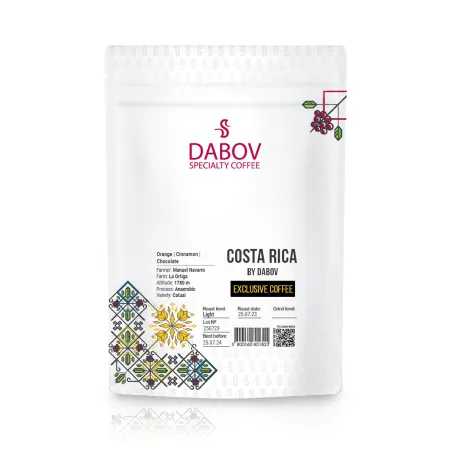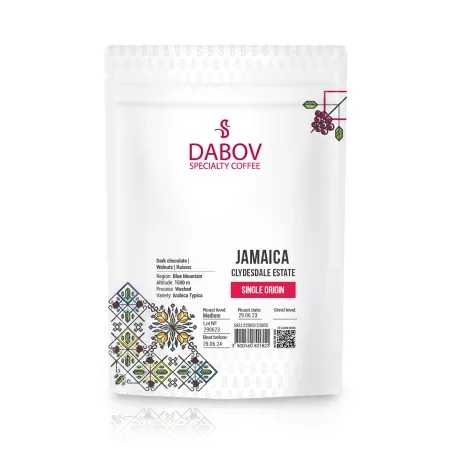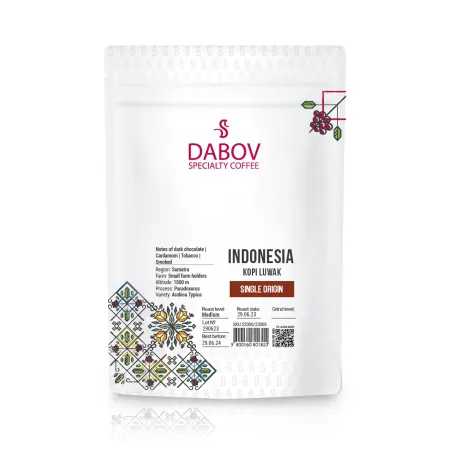The Key Differences Between Commercial and Specialty Coffee
Coffee is more than just a beverage; it's a culture and an art form. As people increasingly seek out quality, understanding the distinctions between commercial and specialty coffee becomes vital. This article delves into the characteristics that set these two types of coffee apart. Explore how commercial coffee focuses on mass production, often lacking in distinct flavor profiles, while specialty coffee emphasizes quality and artisanal sourcing methods. We'll compare taste, sourcing practices, roasting techniques, and more, giving you a comprehensive guide to coffee choices. Learn how to select quality beans and appreciate the brewing techniques that enhance flavors. Join the community of coffee lovers who appreciate quality over quantity.
Coffee, the beloved beverage that fuels millions of people worldwide, has evolved far beyond a simple morning pick-me-up. As global coffee consumption continues to rise, a fascinating divide has emerged in the coffee industry: commercial coffee versus specialty coffee. This distinction has sparked a revolution in how we perceive, consume, and appreciate our daily brew. In this comprehensive guide, we'll delve deep into the key differences between these two coffee categories, providing you with expert insights and a nuanced understanding of what sets them apart.
Introduction
Coffee has been a staple in cultures around the world for centuries, but recent decades have seen a dramatic shift in consumer preferences and industry practices. The emergence of specialty coffee has challenged the long-standing dominance of commercial coffee, introducing a new paradigm focused on quality, origin, and craftsmanship. This growing interest in premium coffee experiences has led to a surge in artisanal roasters, third-wave coffee shops, and a heightened awareness of coffee sourcing and production methods.
As coffee enthusiasts and casual drinkers alike navigate this evolving landscape, understanding the distinctions between commercial and specialty coffee becomes crucial. This article aims to demystify these differences, offering a comprehensive comparison that covers everything from bean selection and roasting techniques to flavor profiles and economic implications. Whether you're a coffee connoisseur or simply curious about upgrading your daily cup, this guide will equip you with the knowledge to make informed choices and appreciate the nuances of your coffee experience.
1. Defining Coffee Types
1.1 What is Commercial Coffee?
Commercial coffee, often referred to as commodity coffee, is the backbone of the global coffee industry. It's the type of coffee you'll find lining supermarket shelves, served in most restaurants, and brewed in countless households worldwide. Defined by its focus on mass production and wide distribution, commercial coffee prioritizes consistency, affordability, and broad appeal over nuanced flavors or specific origin characteristics.
The beans used in commercial coffee are typically a blend of different varieties and origins, chosen for their ability to produce a reliable, uniform taste that meets the expectations of a wide consumer base. These blends often include robusta beans, known for their higher caffeine content and more bitter flavor profile, mixed with arabica beans to balance the taste. The goal is to create a product that's easily recognizable and satisfying to the average coffee drinker, without the complexities or distinct flavor notes found in specialty coffees.
Commercial coffee production operates on a massive scale, with large multinational corporations dominating the market. These companies employ industrial roasting techniques designed to process enormous quantities of beans efficiently. The roasting process for commercial coffee tends to be more aggressive, often resulting in darker roasts that mask the inherent flavors of the beans. This approach ensures a consistent product but can lead to a loss of the subtle nuances and unique characteristics that coffee beans from different regions might possess.
One of the defining features of commercial coffee is its accessibility. It's designed to be brewed easily at home with standard equipment like drip coffee makers or instant coffee methods. The flavor profile typically leans towards bold, robust tastes that can stand up to the addition of milk and sugar, catering to a wide range of consumer preferences. While commercial coffee may lack the complexity and distinct origin flavors of its specialty counterpart, it plays a crucial role in making coffee widely available and affordable to consumers around the world.
1.2 What is Specialty Coffee?
Specialty coffee represents a paradigm shift in the coffee industry, emphasizing quality, traceability, and the unique characteristics of coffee beans. The Specialty Coffee Association (SCA) defines specialty coffee as coffee that scores 80 points or above on a 100-point scale during a standardized cupping evaluation. This rigorous grading system assesses various attributes including aroma, flavor, body, acidity, and aftertaste, ensuring that only the highest quality beans earn the specialty designation.
At its core, specialty coffee is about celebrating the inherent qualities of the coffee bean and the terroir in which it's grown. Unlike commercial coffee, which aims for consistency across large batches, specialty coffee embraces the diversity of flavors that can arise from different varietals, processing methods, and growing regions. This approach treats coffee more like fine wine, appreciating the nuanced differences that can occur even between farms in the same area.
The journey of specialty coffee begins at the farm level, where careful attention is paid to cultivation practices, harvesting methods, and processing techniques. Many specialty coffee producers employ sustainable and ethical farming practices, often resulting in certifications such as Fair Trade, Organic, or Rainforest Alliance. The emphasis on quality extends throughout the supply chain, with meticulous attention paid to storage, transportation, and roasting to preserve the beans' unique characteristics.
Roasting plays a crucial role in the world of specialty coffee. Skilled roasters approach each batch of beans individually, developing roast profiles that highlight the coffee's inherent flavors. This often results in lighter roasts compared to commercial coffee, allowing the bean's natural acidity, sweetness, and complex flavor notes to shine through. Specialty coffee roasters frequently provide detailed information about the coffee's origin, processing method, and flavor notes, encouraging consumers to engage more deeply with their coffee experience.
The grading system for specialty coffee goes beyond just the final cup quality. It takes into account factors such as the absence of primary defects in the green beans, proper moisture content, and size consistency. This comprehensive evaluation ensures that specialty coffee meets high standards at every stage of production. The result is a product that not only tastes exceptional but also supports sustainable practices and fair compensation for farmers.
Specialty coffee has given rise to a culture of coffee appreciation, complete with its own terminology, brewing methods, and tasting rituals. Consumers of specialty coffee often develop a keen interest in the story behind their brew, from the farmers who grew the beans to the roasters who carefully crafted the final product. This connection to the coffee's journey adds an extra layer of enjoyment and value to the drinking experience, fostering a community of enthusiasts passionate about exploring the vast world of coffee flavors.
2. Coffee Quality Comparison
2.1 Taste and Flavor Profile
The taste and flavor profiles of commercial and specialty coffee represent one of the most significant areas of differentiation between these two categories. Commercial coffee, designed for mass appeal, typically offers a consistent, familiar taste that many consumers have come to expect from their daily cup. The flavor profile of commercial coffee often leans towards bold, robust notes with a focus on body and strength rather than complexity or nuance.
In commercial blends, you'll frequently encounter flavors described as nutty, chocolatey, or simply "coffee-like." These profiles are achieved through careful blending and often darker roasting, which can mask some of the inherent flavors of the beans while producing a strong, consistent taste. The acidity in commercial coffee is usually subdued, and the body tends to be medium to full, providing a satisfying mouthfeel that stands up well to additions like milk and sugar.
Specialty coffee, on the other hand, offers a vastly different tasting experience. The focus here is on highlighting the unique characteristics of the beans, which can vary dramatically based on factors like origin, varietal, processing method, and roast level. Specialty coffee flavor profiles are often described using a wide range of terms borrowed from wine tasting, such as floral, fruity, citrusy, or even spicy. These coffees can exhibit complex layers of flavor that evolve as the coffee cools, providing a dynamic tasting experience.
Acidity plays a much more prominent role in specialty coffee, with many prized varieties showcasing bright, vibrant notes that can range from crisp apple-like acidity to the sweetness of ripe berries. The body of specialty coffee can vary widely, from light and tea-like to rich and syrupy, depending on the bean and brewing method. One of the hallmarks of high-quality specialty coffee is a clean, lingering aftertaste that leaves a pleasant sensation long after the last sip.
Freshness is another crucial factor that sets specialty coffee apart in terms of flavor. While commercial coffee is often roasted in large batches and may sit on shelves for months, specialty coffee is typically roasted in smaller quantities and sold within days or weeks of roasting. This emphasis on freshness ensures that consumers experience the coffee at its peak flavor, with aromatic compounds still intact and vibrant.
The concept of "cupping notes" is central to the specialty coffee experience. These are detailed descriptions of the flavors and aromas detected during professional tasting sessions. For example, a single-origin Ethiopian coffee might be described as having notes of blueberry, jasmine, and bergamot, with a honey-like sweetness and a silky body. This level of specificity not only guides consumers in their selection but also encourages a more mindful, exploratory approach to coffee tasting.
It's important to note that the appreciation of these nuanced flavors in specialty coffee often requires careful brewing and, in some cases, drinking the coffee black or with minimal additions. This purist approach allows the full spectrum of flavors to shine through, unmasked by milk or sweeteners. However, many specialty coffee enthusiasts argue that a truly exceptional coffee should be able to maintain its distinct character even when combined with milk in drinks like lattes or cappuccinos.
2.2 Sourcing and Production Methods
The sourcing and production methods employed in commercial and specialty coffee represent another significant area of divergence, with far-reaching implications for quality, sustainability, and ethical considerations. Commercial coffee, driven by the need for large-scale production and cost-efficiency, often relies on sourcing from extensive plantations or cooperatives that can supply massive quantities of beans consistently.
In the commercial coffee sector, beans are typically sourced from multiple regions and even different countries, then blended to achieve a consistent flavor profile. This approach allows for flexibility in sourcing, as variations in crop yield or quality from one region can be offset by adjusting the blend. Commercial coffee production often employs conventional farming methods, which may include the use of chemical fertilizers and pesticides to maximize yield. While efforts have been made to improve sustainability in commercial coffee production, the primary focus remains on efficiency and meeting the demands of a global market.
The harvesting process for commercial coffee frequently involves mechanical methods or strip picking, where all cherries on a branch are harvested at once, regardless of ripeness. This can lead to inconsistencies in quality but allows for faster, more cost-effective harvesting. After harvesting, commercial coffee cherries are often processed using the wet or washed method, which is efficient for large quantities but may not always bring out the best flavors in the beans.
Specialty coffee, in stark contrast, places immense importance on the sourcing and production process, viewing it as integral to the final quality of the cup. Specialty coffee is often sourced from smaller farms or micro-lots, where producers can pay meticulous attention to every aspect of cultivation. These farms are frequently located in specific regions known for producing exceptional coffee, such as the highlands of Ethiopia, the volcanic soils of Guatemala, or the lush mountains of Colombia.
The concept of "single origin" is paramount in specialty coffee, with many enthusiasts seeking out beans not just from a particular country, but from specific farms or even individual plots within a farm. This level of traceability allows for a deep appreciation of how terroir – the environmental factors affecting a crop's phenotype – influences the coffee's flavor profile.
Specialty coffee production often employs sustainable and organic farming practices, not just for environmental reasons but because these methods are believed to result in higher quality beans. Shade-grown coffee, for instance, is common in specialty production, as it allows the cherries to mature more slowly, developing more complex flavors.
Harvesting for specialty coffee is typically done by hand, with pickers selecting only the ripest cherries. This selective harvesting ensures that each bean has reached its full flavor potential. After harvesting, specialty coffee may undergo various processing methods, each chosen to highlight different aspects of the bean's flavor profile. These can include traditional washed processing, natural (dry) processing, honey processing, or experimental methods like anaerobic fermentation.
The relationship between specialty coffee roasters and producers is often much closer than in the commercial sector. Many specialty roasters engage in direct trade practices, visiting farms personally to select beans and build long-term relationships with producers. This direct connection not only ensures quality but often results in better compensation for farmers, encouraging sustainable practices and ongoing improvements in coffee production.
Certifications play a significant role in both commercial and specialty coffee, but they are particularly emphasized in the specialty sector. Beyond organic and Fair Trade certifications, which are also found in some commercial coffees, specialty coffees may carry designations like Rainforest Alliance, Bird Friendly, or specific geographical indications that speak to their origin and production methods.
2.3 Roasting Techniques
Roasting is a critical step in coffee production that significantly impacts the final flavor profile, and the approaches taken by commercial and specialty coffee roasters differ markedly. Commercial coffee roasting is typically done on an industrial scale, prioritizing efficiency and consistency to meet the demands of mass production.
In commercial coffee roasting, large batches of beans are processed using automated systems that can handle thousands of pounds of coffee per hour. These roasters are often computer-controlled to ensure consistency across batches. The roasting profiles for commercial coffee tend to be on the darker side, ranging from medium to dark roasts. This approach serves several purposes: it creates a strong, bold flavor that many consumers associate with "good" coffee, it masks any inconsistencies in bean quality, and it allows for a longer shelf life as darker roasts are less prone to oxidation.
Commercial roasters often aim for a specific flavor profile that remains constant year-round, regardless of seasonal variations in bean quality or origin. To achieve this, they may blend beans from different sources before or after roasting. The focus is on creating a product that meets consumer expectations for a familiar taste, rather than highlighting the unique characteristics of specific beans.
The roasting process for commercial coffee is typically faster and at higher temperatures compared to specialty coffee. This can result in more pronounced roast flavors – such as smoky, burnt, or caramelized notes – which can overshadow the inherent flavors of the beans. While this style of roasting has its fans and certainly serves its market well, it's often criticized by specialty coffee enthusiasts for obscuring the subtle nuances that make each coffee unique.
Specialty coffee roasting, in contrast, is often described as both an art and a science. Specialty roasters approach each batch of beans individually, developing custom roast profiles that aim to highlight the coffee's inherent flavors and aromas. This process requires a deep understanding of how different variables – such as time, temperature, airflow, and bean density – interact to affect the final product.
Roast levels in specialty coffee can vary widely, but there's generally a preference for lighter roasts. Light to medium roasts allow the coffee's natural acidity, sweetness, and origin-specific flavors to shine through. These roasts can reveal delicate floral notes, bright fruit flavors, or complex spice characteristics that would be lost in darker roasts. However, skilled specialty roasters can also produce excellent dark roasts that maintain the coffee's distinct qualities while adding depth and body.
The roasting process for specialty coffee is often slower and more gentle than commercial roasting. Roasters may use smaller batch sizes and equipment that allows for precise control over the roasting parameters. Many specialty roasters use drum roasters, which provide even heat distribution and allow for careful monitoring of the beans throughout the process.
A key aspect of specialty coffee roasting is the attention paid to the "roast curve" – the way temperature changes over time during the roast. Roasters carefully manipulate this curve to bring out desired flavors and balance different aspects of the coffee. They often use tools like data logging software and color analyzers to ensure consistency and quality across batches.
Freshness is paramount in specialty coffee roasting. While commercial coffee may be roasted months before it reaches the consumer, specialty coffee is often sold within days or weeks of roasting. Many specialty roasters print the roast date on their packaging, encouraging consumers to enjoy the coffee at its peak flavor.
Another distinguishing feature of specialty coffee roasting is the emphasis on single-origin roasts. Instead of blending beans from different sources to achieve a consistent flavor, specialty roasters often roast beans from a single farm or region separately. This allows the unique characteristics of each origin to be appreciated on their own merits.
Education and transparency are also key components of specialty coffee roasting. Many roasters provide detailed information about their roasting processes, including roast levels, flavor notes, and suggested brewing methods. Some even offer public cuppings or roastery tours, inviting consumers to deepen their understanding and appreciation of the roasting craft.
3. The Coffee Experience
3.1 Brewing Methods
The brewing methods associated with commercial and specialty coffee reflect the different philosophies and priorities of these two coffee categories. Commercial coffee is designed for convenience and accessibility, while specialty coffee often involves more intricate brewing techniques aimed at extracting the full potential of high-quality beans.
Commercial coffee is most commonly brewed using methods that are quick, easy, and suitable for large-scale preparation. The classic drip coffee maker is ubiquitous in homes and offices, providing a straightforward way to brew multiple cups at once. These machines typically use paper filters, which remove oils and sediment, resulting in a clean, light-bodied cup. The automatic nature of drip machines makes them ideal for those who want a hassle-free brewing experience.
Another popular method for commercial coffee is the use of single-serve pod systems. These machines offer ultimate convenience, brewing individual cups of coffee at the push of a button. While criticized for their environmental impact, pod systems have gained massive popularity due to their ease of use and consistent results.
Instant coffee, which is made by brewing coffee and then dehydrating it into soluble granules, represents the pinnacle of convenience in the commercial coffee world. While often derided by coffee aficionados, instant coffee has seen improvements in quality and remains a go-to option for many consumers, especially in regions where fresh coffee is less accessible.
In contrast, specialty coffee embraces a wide array of brewing methods, each designed to highlight different aspects of the coffee's flavor profile. These methods often require more time, attention, and skill, but proponents argue that the results are worth the extra effort.
Pour-over brewing, using devices like the Hario V60 or Chemex, is a favorite among specialty coffee enthusiasts. This method allows for precise control over variables like water temperature, pour rate, and extraction time. The result is typically a clean, bright cup that showcases the coffee's acidity and subtle flavor notes. Pour-over brewing has become something of an art form, with baristas developing intricate pouring techniques to achieve optimal extraction.
The French press, while not exclusive to specialty coffee, is often used to brew full-bodied, rich cups that retain the coffee's natural oils. This immersion brewing method is prized for its ability to produce a robust flavor and heavy mouthfeel, making it particularly suitable for darker roasts or coffees with chocolate and nut notes.
Espresso, the foundation of many coffee shop beverages, takes on a new level of complexity in the specialty coffee world. Skilled baristas use high-end espresso machines to dial in the perfect shot, adjusting variables like grind size, dose, and extraction time to bring out the best in each coffee. The resulting espresso can be a concentrated expression of the coffee's flavor profile, revealing layers of taste not apparent in other brewing methods.
Cold brew has gained popularity in both commercial and specialty coffee circles, but the approach often differs. Commercial cold brew is typically produced in large batches for extended shelf life, while specialty coffee shops may prepare small batches daily, sometimes using single-origin beans for a more nuanced flavor profile.
More esoteric brewing methods like siphon brewing, which uses vapor pressure and vacuum to extract coffee, or the AeroPress, a versatile device capable of producing espresso-like shots, are embraced by specialty coffee enthusiasts for their ability to create unique flavor profiles.
The choice of brewing method in specialty coffee often depends on the specific characteristics of the beans. A bright, acidic Ethiopian coffee might shine in a pour-over, while a full-bodied Sumatran could be best suited to a French press. This tailored approach to brewing is part of what makes specialty coffee a more engaging and varied experience compared to commercial coffee.
Water quality and temperature are given much more attention in specialty coffee brewing. Many enthusiasts use filtered or specific mineral content water to ensure it complements the coffee without introducing off-flavors. Precise temperature control is also crucial, with different coffees and brewing methods requiring specific temperature ranges to achieve optimal extraction.
Ultimately, the brewing methods associated with commercial and specialty coffee reflect broader differences in approach. Commercial coffee prioritizes consistency and convenience, while specialty coffee focuses on bringing out the unique qualities of each bean, often requiring more involvement from the brewer but potentially offering a more rewarding and diverse coffee experience.
3.2 Coffee Culture
The cultures surrounding commercial and specialty coffee are as distinct as the products themselves, reflecting different values, rituals, and social dynamics. Commercial coffee culture is deeply ingrained in daily life for millions of people worldwide, while specialty coffee has given rise to a more niche, but rapidly growing, subculture.
Commercial coffee culture is characterized by its ubiquity and integration into everyday routines. For many, the day begins with a cup of coffee at home or grabbed on the way to work. This culture values coffee primarily for its caffeine content and its role as a social lubricant. The phrase "Let's grab a coffee" has become shorthand for a casual meeting or catch-up, highlighting coffee's function as a social facilitator.
In the commercial coffee world, chains like Starbucks have played a significant role in shaping global coffee culture. These establishments have created a standardized coffee experience that consumers can rely on, whether they're in New York, Tokyo, or Dubai. The menu items, store layouts, and even the language used (think "venti" or "frappuccino") have become part of a shared cultural lexicon.
Commercial coffee culture often emphasizes customization within certain parameters. Consumers are encouraged to personalize their drinks with various syrups, milk options, and toppings. This approach caters to individual preferences while maintaining the efficiency required for high-volume service.
The convenience factor is paramount in commercial coffee culture. Drive-thru coffee shops, office coffee machines, and home brewing systems all cater to the desire for quick, easy access to caffeine. This culture is less about savoring the nuances of the coffee itself and more about fitting coffee consumption seamlessly into busy lifestyles.
Specialty coffee culture, in contrast, has more in common with wine or craft beer enthusiasm. It's characterized by a deep interest in the product itself, its origins, and the craftsmanship involved in its production. This culture has given rise to the "third wave" coffee movement, which treats coffee as an artisanal foodstuff rather than a commodity.
Education plays a central role in specialty coffee culture. Cafes often provide detailed information about their coffees, including origin, processing method, and tasting notes. Baristas are expected to be knowledgeable about their products and often engage customers in discussions about coffee characteristics and brewing techniques. Many specialty coffee shops offer public cuppings or brewing classes, encouraging customers to deepen their coffee knowledge.
The aesthetic of specialty coffee culture is distinct, often featuring minimalist decor, hand-drawn menu boards, and a focus on the coffee-making process as a form of performance. The sight of a barista meticulously preparing a pour-over or creating latte art has become iconic in this subculture.
Specialty coffee culture places a high value on sustainability and ethical sourcing. Consumers are often willing to pay premium prices for coffee that is certified organic, Fair Trade, or direct trade. There's a strong emphasis on understanding the supply chain and supporting practices that benefit coffee farmers and their communities.
The language of specialty coffee culture can be quite technical, borrowing terms from wine tasting (e.g., "notes of blackberry and jasmine") and incorporating coffee-specific jargon (e.g., "first crack," "cupping score"). This specialized vocabulary serves to both describe the coffee more precisely and to signify membership in the culture.
Social media has played a significant role in shaping specialty coffee culture. Instagram-worthy latte art, beautifully designed cafes, and artfully arranged coffee gear have become staples of coffee enthusiasts' social media feeds. This visual aspect has helped to spread specialty coffee culture beyond its original urban hubs.
While commercial coffee culture is about fitting coffee into one's lifestyle, specialty coffee culture often involves shaping one's lifestyle around coffee. Enthusiasts might plan trips around visiting renowned cafes, invest in expensive home brewing equipment, or spend significant time and effort perfecting their brewing techniques.
Both commercial and specialty coffee cultures continue to evolve. Commercial coffee brands are increasingly borrowing elements from specialty culture, offering single-origin options or highlighting ethical sourcing. Meanwhile, as specialty coffee becomes more mainstream, it faces the challenge of maintaining its focus on quality and craftsmanship while catering to a broader audience.
In both cases, coffee serves as more than just a beverage – it's a cultural touchstone, a daily ritual, and for many, an important part of their identity. The differences between commercial and specialty coffee cultures reflect broader societal trends around consumption, sustainability, and the search for authenticity in an increasingly commodified world.
4. Economic Implications
4.1 Pricing Models
The pricing models for commercial and specialty coffee reflect fundamental differences in production methods, quality standards, and market positioning. Understanding these models provides insight into the economics of the coffee industry and the factors that influence consumer choices.
Commercial coffee pricing is driven primarily by economies of scale and the commodification of coffee beans. Coffee is traded on global commodity markets, with prices influenced by factors such as weather conditions in major producing countries, global supply and demand, and currency fluctuations. The "C Price" refers to the benchmark price for commodity-grade Arabica coffee on the New York Mercantile Exchange, which serves as a reference point for much of the world's coffee trade.
In the commercial coffee sector, roasters often purchase large quantities of green coffee beans at or near the C Price, plus a small premium. The goal is to secure a stable supply of beans at a predictable cost, allowing for consistent pricing of the final product. This approach prioritizes price stability and affordability over bean quality or origin specificity.
Retail pricing for commercial coffee is highly competitive, with brands vying for market share through promotional pricing and volume discounts. Supermarket shelves are often dominated by large brands offering coffee at relatively low price points. These brands can maintain profitability through high-volume sales and efficient production processes.
The pricing model for coffee shop chains like Starbucks is more complex. While their base coffee may be commercial grade, they've successfully positioned themselves as a premium brand. Their pricing reflects not just the cost of the coffee, but also the "experience" they provide – comfortable seating, free Wi-Fi, and a consistent atmosphere across locations. This allows them to charge significantly more per cup than the cost of brewing at home.
Specialty coffee operates on a fundamentally different pricing model. The focus here is on quality and uniqueness rather than volume, leading to higher prices at every stage of the supply chain. At the farm level, specialty coffee producers often receive prices significantly above the C Price, sometimes two to three times higher or more. These higher prices are justified by the extra care and labor involved in producing high-quality beans, as well as the limited quantity of truly exceptional coffee available.
Roasters in the specialty coffee market typically work with much smaller volumes than their commercial counterparts. They may purchase beans in quantities measured in hundreds of pounds rather than tons. This smaller scale, combined with the higher cost of premium beans, results in higher roasting costs per pound. Additionally, specialty roasters often invest more in quality control, staff training, and equipment, all of which contribute to higher prices.
Retail pricing for specialty coffee reflects these higher costs, as well as the perceived value of a premium product. A bag of specialty coffee might cost two to four times as much as commercial coffee. However, proponents argue that the quality justifies the price, likening it to the difference between fine wine and table wine.
In cafes, specialty coffee is often priced significantly higher than commercial alternatives. A cup of pour-over coffee made with single-origin beans might cost $4-$6 or more, compared to $1-$2 for a standard drip coffee at a diner. This pricing reflects not just the cost of the beans, but also the skill involved in preparation, the time required to brew each cup to order, and the overall experience provided by specialty cafes.
The willingness of consumers to pay these higher prices is influenced by several factors. Education plays a key role, with specialty coffee shops and roasters often providing detailed information about the coffee's origin, processing method, and flavor profile. This information helps justify the higher price by emphasizing the coffee's uniqueness and quality.
There's also a growing awareness of the ethical implications of coffee pricing. Many consumers are willing to pay more for coffee that is certified Fair Trade or direct trade, understanding that higher prices can translate to better wages and living conditions for coffee farmers.
The specialty coffee pricing model has implications beyond just the cost to the consumer. By paying higher prices for quality beans, this model can incentivize farmers to invest in improving their crops and processing methods. This can lead to a virtuous cycle of increasing quality and value throughout the supply chain.
However, the higher prices of specialty coffee also mean that it remains inaccessible or occasional treat for many consumers. This has led to ongoing debates within the industry about how to balance quality and accessibility, with some arguing for a "fourth wave" of coffee that brings specialty-grade coffee to a broader market at more affordable prices.
Both commercial and specialty coffee pricing models continue to evolve in response to market forces, consumer preferences, and global events. Factors such as climate change, which threatens coffee production in many regions, and increasing consumer interest in sustainability and origin traceability, are likely to impact pricing structures in both sectors in the coming years.
4.2 Market Trends
The coffee market has undergone significant changes in recent years, with evolving consumer preferences and growing awareness of sustainability issues driving shifts in both the commercial and specialty sectors. Understanding these trends provides insight into the future direction of the coffee industry and the changing relationship between commercial and specialty coffee.
One of the most notable trends is the continued growth of the specialty coffee market. While commercial coffee still dominates in terms of volume, specialty coffee has been gaining market share steadily. According to the Specialty Coffee Association, specialty coffee accounted for 61% of the US coffee market by volume and 67% by value in 2022, up from just 1% in the 1980s. This growth reflects increasing consumer interest in higher quality coffee and willingness to pay premium prices for a superior product.
The rise of specialty coffee has had a ripple effect on the commercial coffee sector. Many mainstream brands have introduced premium or single-origin lines to appeal to more discerning consumers. Even fast-food chains have upgraded their coffee offerings, with some partnering with specialty roasters to improve quality. This "premiumization" trend has blurred the lines between commercial and specialty coffee, creating a spectrum of quality and price points.
Sustainability and ethical sourcing have become major focal points in the coffee industry. Consumers are increasingly concerned about the environmental impact of coffee production and the fair treatment of coffee farmers. This has led to growth in certifications such as Fair Trade, Rainforest Alliance, and organic. While these certifications were once primarily associated with specialty coffee, they've become more common in the commercial sector as well.
Climate change is having a significant impact on coffee production, affecting both yield and quality in many growing regions. This has led to increased focus on developing climate-resistant coffee varieties and implementing sustainable farming practices. Some specialty roasters are working directly with farmers to adapt to changing conditions, while larger commercial entities are investing in research and development to ensure future supply stability.
The COVID-19 pandemic accelerated several existing trends in coffee consumption. With many people working from home, there was a shift towards at-home brewing. This benefited both commercial brands selling through supermarkets and specialty roasters offering direct-to-consumer sales online. The pandemic also spurred innovation in packaging and distribution, with some roasters offering subscriptions or "coffee flights" to replicate the cafe experience at home.
Ready-to-drink (RTD) coffee has seen explosive growth, appealing to consumers seeking convenience without sacrificing quality. This category includes both commercial offerings like canned lattes and cold brews from specialty roasters. The RTD trend has opened up new opportunities for both commercial and specialty brands to reach consumers in different contexts.
There's growing interest in coffee as an ingredient beyond the traditional cup. This includes coffee-flavored foods, coffee-based cocktails, and the use of coffee in cooking. This trend has created opportunities for coffee companies to expand their product lines and reach new markets.
Technology is playing an increasingly important role in the coffee industry. This includes advances in brewing equipment for both commercial and home use, as well as the application of data analytics and artificial intelligence in coffee production and roasting. Some specialty roasters are using software to create precise roasting profiles, while commercial producers are leveraging big data to optimize their supply chains.
The "third wave" of coffee, characterized by its focus on quality, origin, and craft, continues to evolve. Some industry observers speak of an emerging "fourth wave," which aims to make high-quality coffee more accessible to a broader audience. This could involve applying the quality standards of specialty coffee to larger-scale production, potentially bridging the gap between commercial and specialty sectors.
There's growing recognition of coffee-producing countries as consumers, not just suppliers. Countries like Brazil, Colombia, and Vietnam have seen growth in domestic specialty coffee scenes, challenging the traditional flow of the highest quality beans to Western markets.
Transparency is becoming increasingly important in the coffee industry. Many specialty roasters now provide detailed information about their sourcing practices, including the prices paid to farmers. This trend is putting pressure on the commercial sector to be more open about their supply chains.
The rise of plant-based diets has impacted the coffee industry, with growing demand for non-dairy milk alternatives in cafes. This has led to innovation in both commercial and specialty sectors, with the development of plant-based milks specifically formulated for use in coffee.
These market trends reflect a coffee industry in flux, with both challenges and opportunities for commercial and specialty sectors. As consumer awareness and expectations continue to evolve, the industry will need to adapt, potentially leading to further convergence between commercial and specialty practices in some areas, while maintaining distinct identities in others.
5. Specialty Coffee Guide
5.1 How to Choose Specialty Coffee
Selecting high-quality specialty coffee can be an exciting but potentially overwhelming experience for those new to the world of premium coffee. This guide will help you navigate the process, ensuring you choose coffees that align with your taste preferences and values.
- Understand Roast Levels:Specialty coffee is available in a range of roast levels, each highlighting different aspects of the bean's flavor profile. Light roasts tend to preserve the bean's original flavors, showcasing bright acidity and complex, nuanced notes. Medium roasts offer a balance between the bean's inherent flavors and those developed during roasting, often featuring a well-rounded taste with some caramel sweetness. Dark roasts emphasize bold, rich flavors with less acidity, sometimes accompanied by smoky or chocolatey notes. Begin by trying coffees across the roast spectrum to determine your preference.
- Explore Origins:One of the joys of specialty coffee is experiencing the diverse flavor profiles associated with different growing regions. Central and South American coffees often feature chocolate and nut notes with medium body. African coffees, particularly those from Ethiopia and Kenya, are known for their bright acidity and complex fruit or floral notes. Indonesian coffees typically offer full body with earthy, spicy, or herbal characteristics. Start by sampling single-origin coffees from various regions to discover your favorites.
- Consider Processing Methods:The way coffee cherries are processed after harvesting significantly impacts flavor. Washed (or wet) processed coffees tend to have a clean, bright taste with pronounced acidity. Natural (or dry) processed coffees often exhibit fruitier flavors with a heavier body. Honey processed coffees fall between these two, offering a balance of fruitiness and clarity. Experimenting with different processing methods can help you identify your preferences.
- Check Roast Dates:Freshness is crucial in specialty coffee. Look for beans with a recent roast date, ideally within the last two weeks. Many specialty roasters print the roast date on their packaging. Avoid coffee with a "best by" date instead of a roast date, as this doesn't provide clear information about freshness.
- Read Flavor Notes:Specialty coffee often comes with detailed flavor notes describing the taste profile. These can include references to fruits, flowers, spices, or other familiar flavors. While everyone's palate is different



